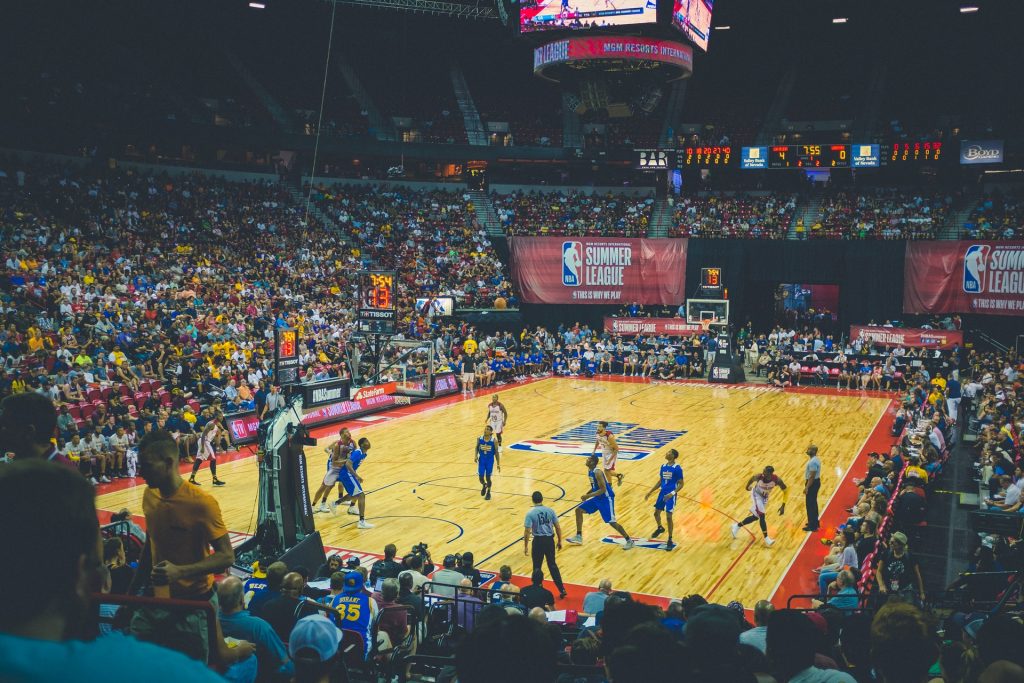I know this may seem strange since it is written right into its definition, which is 3 points. However, in recent years we are seeing a radical change in terms of choosing the best shot available, to the point of considering this the sole criterion on which to build a winning roster. So is the 3-point shot really worth too much these days? What happens when many players begin to become extremely effective at this fundamental?
The introduction of this rule, was intended to balance offensive solutions to make the game more balanced, so that it would reward the more complete team. Instead, in recent years, the 3-point shot has become the main weapon of any team, both in the NBA and in Europe. And it is perhaps the rule that has most revolutionized basketball in its 130 years of existence.

Introduced in 1979 in the NBA, the 3-point shot allowed slender or unathletically gifted players to have an extra weapon to be decisive on the court, rather than relying exclusively on centers or powerful wings with outsized physiques. Before these recently concluded Playoffs, it had never occurred to me to think that this shooting “was worth too much” or represented a kind of bug in the dynamics of the game. However, I was impressed to hear these words within a podcast after Game 2 between the Suns and Mavericks:
“Phoenix is clearly the better team, but every time this difference starts to show, Dallas manages to hang on to the game through 3-point shooting because it is their only asset. This highlights how one play can actually reward a less equipped team, just because it is a shot that’s worth too much.”
Clearly this is a provocation, but indeed NBA teams seem to see it that way. Especially Daryl Morey, current president of the 76ers, is adamant that the 3-point shot is such an advantageous weapon that it should be worth 2.5 points instead of 3. In favor of his argument we can apply a simple mathematical calculation. If 33% of 3-point shots were scored, it would be equivalent to scoring 50% of 2-point shots. That is, 1 point per shot. But the extra point you earn from behind the arc gives you much more incentive to go for that solution. And it took more than 30 years for the NBA to realize this.

Morey himself, starting in 2014, began building the Rockets’ roster with one criterion in mind, and that was that they be an efficient 3-point shooting team. The climax came in the 2017-2018 season, in Game 7 of the Western Conference finals against Golden State, a game in which Houston came up against the harsh reality that basketball is not just math. Harden and his teammates missed 27 consecutive 3-point shots (about one every 50 seconds) and finished the game with a paltry 7 of 49. “Live by the three, die by the three.”
But so is it really an improper weapon? The answer I feel like giving is no. Digging deeper, one can see that the 3-point shot is a perfectly balanced mechanic within the game of basketball. For the demonstration of this thesis the numbers come to the rescue.
Over the past 20 years, the average number of 3-point shots attempted per game has increased from 15 to 35. However, however, the percentage made has remained about the same, despite the almost obsessive attention given to this fundamental. When I first saw these numbers I was speechless. How is it possible that the realization percentage has not increased?

It almost seems as if those who introduced the 3-point line back in 1961 knew perfectly well what the perfect distance was for this shot to become advantageous to take, but not so much as to create an imbalance in the game. In fact, they did not know.

Abe Saperstein and Ray Meyer drew the lines arbitrarily at the distance of 7 feet 62cm and 6 feet 70 from the corners, without any scientific basis but according to them “for new and interesting possibilities within the game.”
Over time and with various adjustments, the final distance of 7 meters and 28cm was arrived at in 1967, and this distance was tweaked for only 3 years from 1996 to 1998 (6 meters and 70 for the entire field) and then returned to the original distance.

Returning instead to the assessment on 3-point percentages that have almost remained unchanged over the past 20 years, it is interesting to note that instead it has been the 2-point shot that has increased in percentage. This is because teams have become excellent at shooting from long distance, to the point that all other available shots begin to be easier to take as defenses attack shooters well beyond the fateful line.

And that is why the 3-point shot is a perfectly balanced mechanic. The moment a team is extremely strong beyond the arc, the defense will focus its game plan to limit 3-point solutions as much as possible, at the cost of leaving more space in the area. Conversely, if you are not a team that makes 3-point shooting its strong point, you will be able to allow more freedom because it does not represent an advantage and so as not to leave easy points under the basket.
In the end then, the only criterion that makes a difference is the quality of the shot, which for the past 20 years has remained the same, which is 1: 1 point per shot. And if until last year people could give credence to those who claimed that the 3-point shot represented a huge advantage within the game of basketball, now those people will have to think again. For the first time in the past 40 years, NBA teams have been so efficient at the 2-point shot that trying this fundamental has taken on more value than attempting a 3-pointer.

Saperstein and Meyer had it right from the start. The 3-point shot is exactly at the distance where it should be and is worth exactly the points it should be worth.



